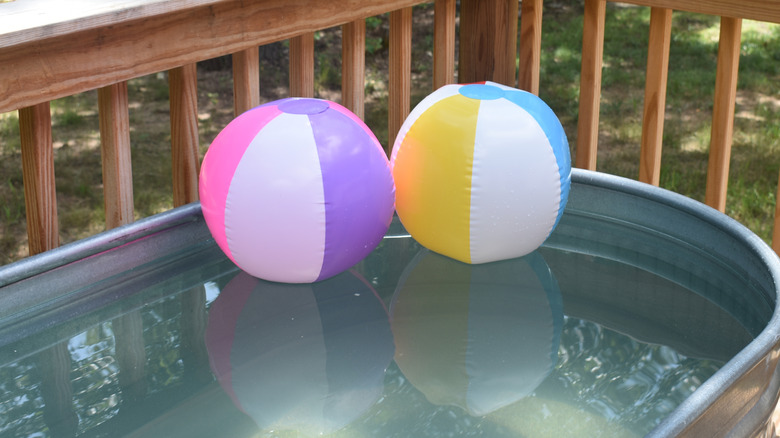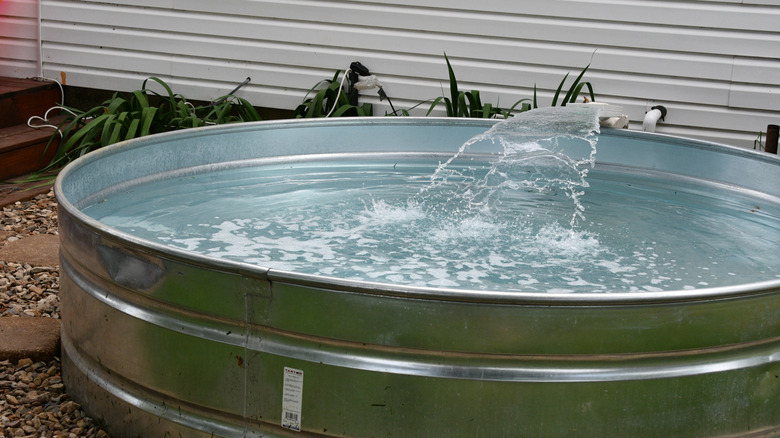A Guide To Prepping Your Backyard Stock Tank Pool For Chilly Winter Months
Unless you're a fan of ice baths, you probably won't be taking any dips in your backyard stock tank pool until the weather turns warm again. But what happens to your pool in the meantime? Winterizing a traditional in-ground pool involves special chemicals, lowering the water level, and more. But wintering a stock tank pool is significantly easier. Depending on how cold it gets in your area, the most you need to do is drain and cover the pool, but you may not even need to do that.
Manufacturers don't recommend draining your stock tank pool unless your area is likely to get freezing temperatures for more than a few days. In an empty pool, rain and debris can result in damage, and keeping the tub full also helps slow down the rusting process. On the other hand, frozen water is also a risk — water expands as it freezes and can damage or crack equipment.
If your region only freezes for short periods, keep the pool full with the pumps on and active, since flowing water is less vulnerable to freezing over. You can cut down on cleaning in the winter; about one tab of chlorine per month is sufficient. You can also cover the pump, filters, and hoses with blankets or towels for insulation. Alternatively, those with mild winters may opt to simply turn off and unplug the pump and disconnect all hoses, leaving the water to sit idle until spring. A pool cover comes in handy in winter for minimizing debris.
Do this during freezing weather for your backyard stock tank pool
If your region freezes for extended periods of time, it's best to empty and store your stock tank pool at the end of the season. First drain the stock tank by using the pool pump. Once the water level reaches the holes on the side of the pool, stop draining to prevent the pump from running dry. Use a sump pump or submersible pump to remove the rest of the water from the bottom of the pool. Switch off and unplug the pump, plug up the side holes, and disconnect the filters.
You have a few storage options at this point. You can keep the stock tank pool in place and cover it with a pool cover or tarp; you may need to use wooden boards and/or poles to keep the cover in place during the season's snow, rain, and wind. You can also turn the stock tank upside down on a flat surface or prop it against a sturdy wall to prevent water from pooling inside of it.
Rather than draining the pool, you can also opt to convert your stock tank pool into a hot tub during the winter. Depending on your set-up, you may be able to connect an in-line spa heater to your pool pump hose, though the pump needs to be big enough to keep the heater running. Or you can use a tankless propane water heater. If you go the hot tub route, don't forget to insulate the pool to keep the heat in and avoid wasting energy.

